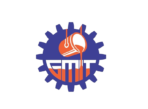Military, aerospace, and nuclear technologies
- Carbon fibre making project for aerospace applications(from coke resin), using plasma pyrolysis technology.
- Level 4 bullet-proof jackets for soldiers and Level 5 bullet-proof jackets for VIPs.
- Laser-supported ‘machine eye’ for day and night vision images up to 6 km (third generation technology, after night vision binoculars and thermal imagers).
- Continuous basalt thread making/basalt fibre making technology, with downstream products like basalt mats and boards, sandwich panels, Basalt woven cloth (for rain-proof tents, for fire-fighting, and for high-altitude weather-proof military clothing), and making composites for bullet-proof jackets.
- Centrifugal test stands with air cushion bearing technology (without the need for heavy foundations) to test objects weighing up to 2,000 kgs at 100 G force (or up to 100 kgs at 600 G force), exceeding global standards. This technology can be used for making the parts for civil aviation, missiles, rockets, and spaceship applications (which are subject to high frictional loads while escaping from / entering into Earth’s gravitational fields).
- Electron beam molecular level vacuum welding technology for all metals (up to 160 mm thick sheets) for military, aircraft, turbines, nuclear and space equipment, and rocket body/engines. It can also be used for programmed welding of several components at a time (for example, 200 automobile components of 1 ft. height and 6” dia can be welded simultaneously in one hour).
- Aluminium, copper, and brass scrap-melting and centrifugal casting of cylinders at 300 G force (up to 5-meter dia., and 1-meter height), to produce metals with improved microstructure (for example – aluminium with 40% higher strength / 40% lower weight) for cryogenic rocket engines and long-distance missile bodies.
- Supersonic plasma for spraying and hard-coating of strategic materials such as tungsten carbide/diamond powder (for example, coating inside the plates of bullet-proof jackets).
- Electroslag re-melting, to make products with double hardness(using the same metallurgy, but by changing the speed of crystallization), to make strong dies for forging, and for other strategic applications.
- Growing of flat, super-hard, and transparent sapphire crystals for military applications, including face shields for soldiers.
- Plasma-assisted skull melting crucible furnace to make super-thin basalt fibres.
- High-temperature graphene sheet pressing technology from expanded graphite, for strategic applications (including aero planes invisible for radar detection).
